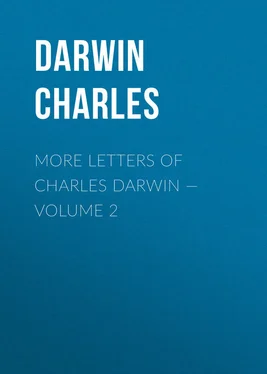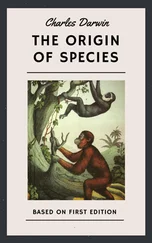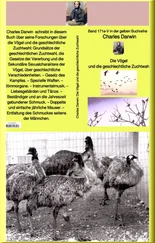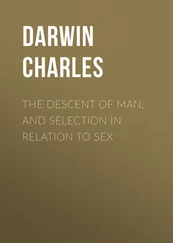Charles Darwin - More Letters of Charles Darwin — Volume 2
Здесь есть возможность читать онлайн «Charles Darwin - More Letters of Charles Darwin — Volume 2» — ознакомительный отрывок электронной книги совершенно бесплатно, а после прочтения отрывка купить полную версию. В некоторых случаях можно слушать аудио, скачать через торрент в формате fb2 и присутствует краткое содержание. Жанр: foreign_antique, foreign_prose, на английском языке. Описание произведения, (предисловие) а так же отзывы посетителей доступны на портале библиотеки ЛибКат.
- Название:More Letters of Charles Darwin — Volume 2
- Автор:
- Жанр:
- Год:неизвестен
- ISBN:нет данных
- Рейтинг книги:5 / 5. Голосов: 1
-
Избранное:Добавить в избранное
- Отзывы:
-
Ваша оценка:
- 100
- 1
- 2
- 3
- 4
- 5
More Letters of Charles Darwin — Volume 2: краткое содержание, описание и аннотация
Предлагаем к чтению аннотацию, описание, краткое содержание или предисловие (зависит от того, что написал сам автор книги «More Letters of Charles Darwin — Volume 2»). Если вы не нашли необходимую информацию о книге — напишите в комментариях, мы постараемся отыскать её.
More Letters of Charles Darwin — Volume 2 — читать онлайн ознакомительный отрывок
Ниже представлен текст книги, разбитый по страницам. Система сохранения места последней прочитанной страницы, позволяет с удобством читать онлайн бесплатно книгу «More Letters of Charles Darwin — Volume 2», без необходимости каждый раз заново искать на чём Вы остановились. Поставьте закладку, и сможете в любой момент перейти на страницу, на которой закончили чтение.
Интервал:
Закладка:
LETTER 440. TO A.R. WALLACE.
(440/1. The following refers to Mr. Wallace's article "A Theory of Birds' Nests," in Andrew Murray's "Journal of Travel," Volume I., page 73. He here treats in fuller detail the view already published in the "Westminster Review," July 1867, page 38. The rule which Mr. Wallace believes, with very few exceptions, to hold good is, "that when both sexes are of strikingly gay and conspicuous colours, the nest is...such as to conceal the sitting bird; while, whenever there is a striking contrast of colours, the male being gay and conspicuous, the female dull and obscure, the nest is open, and the sitting bird exposed to view." At this time Mr. Wallace allowed considerably more influence to sexual selection (in combination with the need of protection) than in his later writings. The following extract from a letter from Mr. Wallace to Darwin (July 23rd, 1877) fixes the period at which the change in his views occurred: "I am almost afraid to tell you that in going over the subject of the colours of animals, etc., etc., for a small volume of essays, etc., I am preparing, I have come to conclusions directly opposed to voluntary sexual selection, and believe that I can explain (in a general way) all the phenomena of sexual ornaments and colours by laws of development aided by simple 'Natural Selection.'" He finally rejected Mr. Darwin's theory that colours "have been developed by the preference of the females, the more ornamented males becoming the parents of each successive generation." "Darwinism," 1889, page 285. See also Letters 442, 443, 449, 450, etc.)
Down, April 15th, {1868}.
I have been deeply interested by your admirable article on birds' nests. I am delighted to see that we really differ very little, — not more than two men almost always will. You do not lay much or any stress on new characters spontaneously appearing in one sex (generally the male), and being transmitted exclusively, or more commonly only in excess, to that sex. I, on the other hand, formerly paid far too little attention to protection. I had only a glimpse of the truth; but even now I do not go quite as far as you. I cannot avoid thinking rather more than you do about the exceptions in nesting to the rule, especially the partial exceptions, i.e., when there is some little difference between the sexes in species which build concealed nests. I am not quite satisfied about the incubating males; there is so little difference in conspicuousness between the sexes. I wish with all my heart I could go the whole length with you. You seem to think that male birds probably select the most beautiful females; I must feel some doubt on this head, for I can find no evidence of it. Though I am writing so carping a note, I admire the article thoroughly.
And now I want to ask a question. When female butterflies are more brilliant than their males you believe that they have in most cases, or in all cases, been rendered brilliant so as to mimic some other species, and thus escape danger. But can you account for the males not having been rendered equally brilliant and equally protected? (440/2. See Wallace in the "Westminster Review," July, 1867, page 37, on the protection to the female insect afforded by its resemblance either to an inanimate object or to another insect protected by its unpalatableness. The cases are discussed in relation to the much greater importance (to the species as a whole) of the preservation of the female insect with her load of eggs than the male who may safely be sacrificed after pairing. See Letter 189, note.) Although it may be most for the welfare of the species that the female should be protected, yet it would be some advantage, certainly no disadvantage, for the unfortunate male to enjoy an equal immunity from danger. For my part, I should say that the female alone had happened to vary in the right manner, and that the beneficial variations had been transmitted to the same sex alone. Believing in this, I can see no improbability (but from analogy of domestic animals a strong probability) that variations leading to beauty must often have occurred in the males alone, and been transmitted to that sex alone. Thus I should account in many cases for the greater beauty of the male over the female, without the need of the protective principle. I should be grateful for an answer on the point.
LETTER 441. TO J. JENNER WEIR. Down, April 18th {1868}.
You see that I have taken you at your word, and have not (owing to heaps of stupid letters) earlier noticed your three last letters, which as usual are rich in facts. Your letters make almost a little volume on my table. I daresay you hardly knew yourself how much curious information was lying in your mind till I began the severe pumping process. The case of the starling married thrice in one day is capital, and beats the case of the magpies of which one was shot seven times consecutively. A gamekeeper here tells me that he has repeatedly shot one of a pair of jays, and it has always been immediately replaced. I begin to think that the pairing of birds must be as delicate and tedious an operation as the pairing of young gentlemen and ladies. If I can convince myself that there are habitually many unpaired birds, it will be a great aid to me in sexual selection, about which I have lately had many troubles, and am therefore rejoiced to hear in your last note that your faith keeps staunch. That is a curious fact about the bullfinches all appearing to listen to the German singer (441/1. See Letter 445, note.); and this leads me to ask how much faith may I put in the statement that male birds will sing in rivalry until they injure themselves. Yarrell formerly told me that they would sometimes even sing themselves to death. I am sorry to hear that the painted bullfinch turns out to be a female; though she has done us a good turn in exhibiting her jealousy, of which I had no idea.
Thank you for telling me about the wildness of the hybrid canaries: nothing has hardly ever surprised me more than the many cases of reversion from crossing. Do you not think it a very curious subject? I have not heard from Mr. Bartlett about the Gallinaceae, and I daresay I never shall. He told me about the Tragopan, and he is positive that the blue wattle becomes gorged with blood, and not air.
Returning to the first of the last three letters. It is most curious the number of persons of the name of Jenner who have had a strong taste for Natural History. It is a pity you cannot trace your connection with the great Jenner, for a duke might be proud of his blood.
I heard lately from Professor Rolleston of the inherited effects of an injury in the same eye. Is the scar on your son's leg on the same side and on exactly the same spot where you were wounded? And did the wound suppurate, or heal by the first intention? I cannot persuade myself of the truth of the common belief of the influence of the mother's imagination on the child. A point just occurs to me (though it does not at present concern me) about birds' nests. Have you read Wallace's recent articles? (441/2. A full discussion of Mr. Wallace's views is given in "Descent of Man," Edition I., Volume II., Chapter XV. Briefly, Mr. Wallace's point is that the dull colour of the female bird is protective by rendering her inconspicuous during incubation. Thus the relatively bright colour of the male would not simply depend on sexual selection, but also on the hen being "saved, through Natural Selection, from acquiring the conspicuous colours of the male" (loc. cit., page 155).) I always distrust myself when I differ from him; but I cannot admit that birds learn to make their nests from having seen them whilst young. I must think it as true an instinct as that which leads a caterpillar to suspend its cocoon in a particular manner. Have you had any experience of birds hatched under a foster-mother making their nests in the proper manner? I cannot thank you enough for all your kindness.
Читать дальшеИнтервал:
Закладка:
Похожие книги на «More Letters of Charles Darwin — Volume 2»
Представляем Вашему вниманию похожие книги на «More Letters of Charles Darwin — Volume 2» списком для выбора. Мы отобрали схожую по названию и смыслу литературу в надежде предоставить читателям больше вариантов отыскать новые, интересные, ещё непрочитанные произведения.
Обсуждение, отзывы о книге «More Letters of Charles Darwin — Volume 2» и просто собственные мнения читателей. Оставьте ваши комментарии, напишите, что Вы думаете о произведении, его смысле или главных героях. Укажите что конкретно понравилось, а что нет, и почему Вы так считаете.












